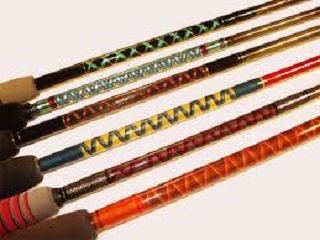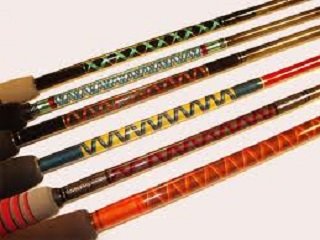 Selecting a new rod to add to your arsenal is one of the most involved, drawn-out processes a fisherman can undergo. Not only are there literally hundreds of makes and models to choose from, but each one is available in a plethora of lengths and actions. Many anglers find themselves overwhelmed by the endless choices when it comes time to pick out a new rod. If you’re one such fisherman, worry no more. Take a breath and be confident in the knowledge that, by the time you’re done reading this article, choosing the right rod for your style and needs will no longer require Aspirin.
Selecting a new rod to add to your arsenal is one of the most involved, drawn-out processes a fisherman can undergo. Not only are there literally hundreds of makes and models to choose from, but each one is available in a plethora of lengths and actions. Many anglers find themselves overwhelmed by the endless choices when it comes time to pick out a new rod. If you’re one such fisherman, worry no more. Take a breath and be confident in the knowledge that, by the time you’re done reading this article, choosing the right rod for your style and needs will no longer require Aspirin.
Just like picking out any new piece of tackle, you’ll need to approach the task with a clear focus on what kind of fishing you’ll need the rod for. Obviously, if you’re a bluegill or crappie fisherman, you won’t need a seven-foot, heavy action rod, and redfish anglers will want to steer clear of nine-foot, ultralight setups. The lures and baits you’ll be using will play an important role in choosing a rod, as well. There are rods specifically designed for crankbaits, for instance, as well as rods that are fine-tuned for worms and tubes.
With all these lure-specific rods on display, which do you choose? Well, if money isn’t an issue, and you have the space that a boat or fishing room affords, then I suggest grabbing a rod best-suited for each type of lure you predominantly use. Pro anglers and many everyday fishermen alike will keep half a dozen rods, pre-rigged and at the ready, so they can easily find the one they need to adjust to the ever-changing behavior of the fish. As I said, if you have the financial means, this is a great idea. However, practicality dictates that buying that many rods isn’t always realistic, in which case choosing a length and action that reflects the species you target is a better bet. For instance, I fish for bass more than any other species, so my main rod is a seven-foot, medium action spinning rod, which can easily handle a variety of lures.
Before, I’ve commented on the harsh reality that accompanies the prices of fishing tackle, which is this: the higher the price, the better the product. This doesn’t mean that a $30 rod isn’t a good rod, but it will pale in comparison to a $200 rod. When faced with price options, think long and hard about how often you fish and your style. I change lures frequently, and make thousands upon thousands of casts throughout the day, so I opted for a Carbonlite rod for its lighter weight and durability. If you don’t make many casts, you can get away with a heavier graphite rod. I own several $30 graphite rods that have pulled in everything from bluegill to steelhead throughout the years. The trick is knowing the signs of a quality rod—flexibility, durability, quality guides and handle material, etc.
There really isn’t one almighty rod that outperforms every other one on the market. Every rod is tailored to a specific use, which is why many avid anglers keep several on hand. Sometimes it’s more practical to grab four or five quality $30 rods instead of one $300 rod, especially if you’re like me and change lures often. Stay focused on your own style and needs and don’t be afraid to ask questions. The associates at outdoor retail stores are knowledgeable and most can tell you how a rod performs based on personal experience. Learn from them and their years of experience and you’ll have a new rod in the boat in no time.








